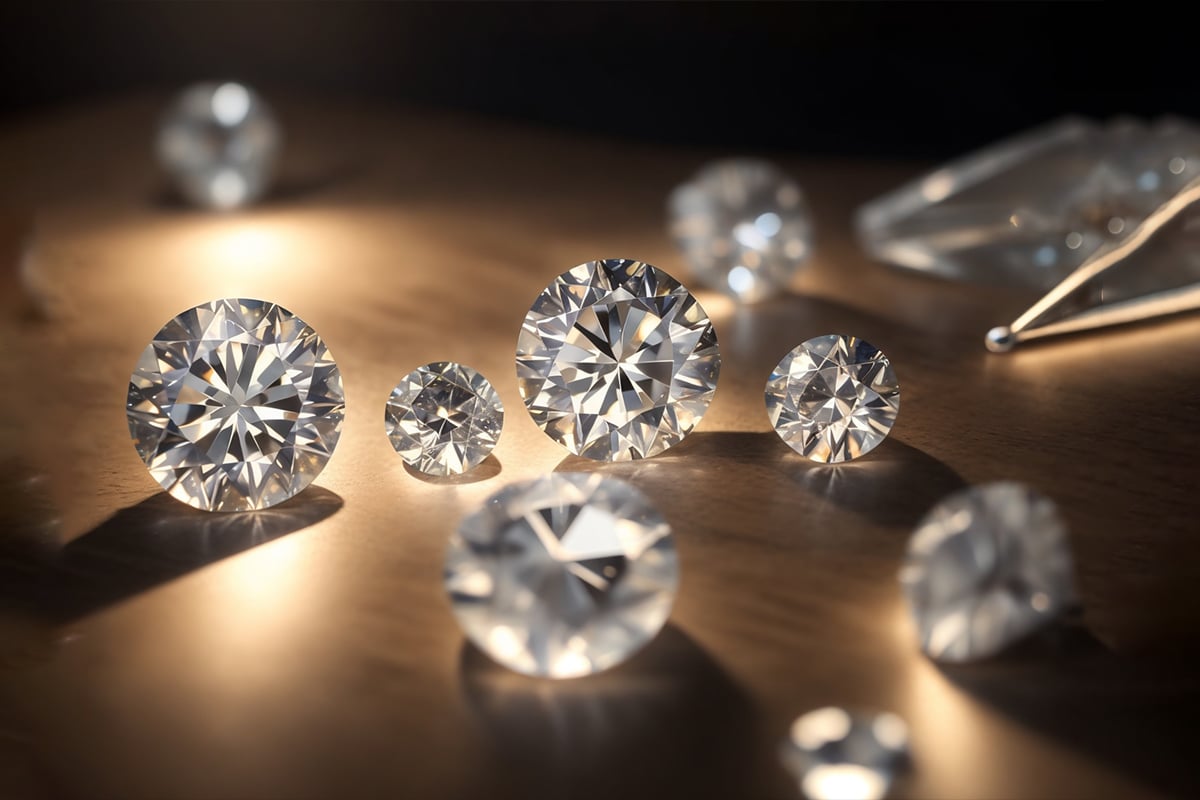Introduction: The Sparkle of a New Era
When you think of diamonds, what comes to mind? Most likely, it’s a sparkling gem, an eternal symbol of love, luxury, and commitment. But what if we told you that some of the most beautiful diamonds in the world are no longer mined from the earth? Instead, they’re created in labs, crafted with cutting-edge technology, and are just as brilliant as their natural counterparts. Welcome to the world of lab-grown diamonds—a revolutionary innovation that’s changing the jewelry industry, one stone at a time.
This article takes you on an insider’s journey into the world of lab grown diamonds insider story. From the science behind their creation to the industry shifts they’re driving, we’ll explore how these diamonds are pushing the boundaries of sustainability, ethics, and luxury.
What Are Lab-Grown Diamonds?
The Science Behind Lab-Grown Diamonds
At their core, lab-grown diamonds are real diamonds—they’re made of the same carbon atoms arranged in a crystal structure, and they share the same chemical, physical, and optical properties as mined diamonds. The key difference? They are grown in a controlled environment rather than extracted from the earth.
There are two primary methods used to create lab-grown diamonds: High Pressure High Temperature (HPHT) and Chemical Vapor Deposition (CVD).
- HPHT: This method replicates the natural conditions found deep within the Earth’s mantle, using extreme pressure and temperature to turn carbon into a diamond.
- CVD: This method uses a gas mixture to deposit carbon atoms onto a substrate, slowly building up the diamond structure layer by layer.
Difference Between Lab-Grown Diamonds and Natural Diamonds
While both types of diamonds are chemically identical, lab-grown diamonds offer a few advantages over their mined counterparts:
- Cost-Effective: Lab-grown diamonds are typically 20-40% less expensive than natural diamonds of similar quality.
- Ethically Sourced: Lab-grown diamonds are conflict-free, as they are not tied to mining practices that exploit workers or damage the environment.
- Sustainability: The environmental impact of lab-grown diamonds is significantly lower than that of mined diamonds, which often require invasive mining practices that harm ecosystems.
The Diamond Growing Process
Creating a diamond in a lab is no small feat. It takes anywhere from a few weeks to several months to grow a diamond, depending on the size and desired quality. The process requires highly sophisticated equipment and careful attention to detail, but the result is a diamond that’s indistinguishable from one found in nature—except for its origin.
The History of Lab-Grown Diamonds
Early Experiments and Breakthroughs
The idea of creating diamonds in a lab dates back to the mid-20th century, when scientists first attempted to replicate the conditions of the Earth’s crust. However, it wasn’t until the 1950s that the first successful man-made diamonds were produced. These early diamonds were small, industrial-grade stones, mostly used for cutting and grinding.
Lab-Grown Diamonds in the 21st Century
Fast forward to today, and lab-grown diamonds have evolved significantly. Advancements in technology have made it possible to create large, high-quality stones that rival the best mined diamonds. In fact, some lab-grown diamonds are now indistinguishable from natural diamonds, even under a microscope, making them an increasingly popular choice for consumers.
The Benefits of Lab-Grown Diamonds
Sustainability and Eco-Friendliness
One of the most compelling reasons to choose a lab-grown diamond is its environmental impact. Traditional diamond mining involves the excavation of vast amounts of earth, causing environmental degradation, deforestation, and carbon emissions. Lab-grown diamonds, on the other hand, require far less energy and water, making them a more sustainable option.
Ethical Considerations
Diamond mining has a long history of ethical concerns, from child labor to exploitation of workers in dangerous conditions. With lab-grown diamonds, consumers can rest assured that their purchase isn’t contributing to these problems. Lab-grown diamonds offer a conflict-free alternative, free from the negative human and environmental costs associated with traditional mining.
Affordability
Lab-grown diamonds provide the same sparkle and brilliance as mined diamonds but at a fraction of the cost. Consumers can purchase a larger stone or a higher-quality diamond without breaking the bank. This makes them an appealing option for those who want the beauty of a diamond without the hefty price tag.
Lab-Grown Diamonds: The Myths and Realities
The Myth of Inferiority
Some people still believe that lab-grown diamonds are inferior to natural diamonds. This myth has been perpetuated by misinformation and a lack of understanding about the creation process. The truth is, lab-grown diamonds are chemically identical to natural diamonds and exhibit the same durability, brilliance, and fire.
The Misconception of Quality
Another misconception is that lab-grown diamonds are of lower quality than their mined counterparts. In reality, lab-grown diamonds are graded based on the same Four Cs—cut, clarity, color, and carat weight—as natural diamonds, and many man made diamonds have excellent quality ratings.
How Lab-Grown Diamonds Are Revolutionizing the Jewelry Market
Changing Consumer Preferences
Today’s consumers are more environmentally conscious and ethically minded than ever before. As awareness grows about the negative effects of diamond mining, many people are choosing to buy lab-grown diamonds instead. This shift in consumer behavior has forced the jewelry industry to take notice and embrace lab-grown diamonds as a legitimate alternative to mined diamonds.
The Role of Celebrities and Influencers
Celebrities and influencers are also playing a major role in promoting lab-grown diamonds. High-profile figures like Meghan Markle, Leonardo DiCaprio, and Emma Watson have publicly supported sustainable and ethical jewelry, helping to normalize lab-grown diamonds in the mainstream. This endorsement from public figures has further fueled the popularity of lab-grown diamonds.
The Competitive Pricing of Lab-Grown Diamonds
Lab-grown diamonds are often significantly less expensive than natural diamonds, especially at larger sizes or higher grades. This price advantage has made them particularly appealing to younger buyers and those looking to get more value for their money. With lab-grown diamonds, consumers can afford a larger or higher-quality diamond than they could with a mined stone.
The Future of Lab-Grown Diamonds
Innovation and Advancements
The technology behind lab-grown diamonds is constantly evolving. Researchers are continually working to improve the diamond-growing process, making it faster, more energy-efficient, and capable of producing even higher-quality diamonds. As technology advances, lab-grown diamonds will only become more accessible and affordable.
The Market Outlook: What’s Next?
The lab-grown diamond market is expected to continue its growth in the coming years. As demand rises and more companies enter the market, we can expect to see greater variety, better quality, and even more competitive pricing. The future of lab-grown diamonds looks bright, with consumers increasingly viewing them as a viable, ethical, and sustainable alternative to mined diamonds.
Where to Buy Lab-Grown Diamonds: A Guide
Selecting a Reputable Retailer
When purchasing a lab-grown diamond, it’s important to buy from a trusted, reputable retailer. Look for companies that provide detailed grading reports, offer a wide selection of diamonds, and have transparent business practices.
Certification and Grading of Lab-Grown Diamonds
Just like mined diamonds, lab-grown diamonds should come with a certification from a recognized grading organization, such as the GIA or IGI. These certificates ensure the diamond’s quality and authenticity.
Understanding the 4 Cs for Lab-Grown Diamonds
Lab-grown diamonds are graded using the same Four Cs as natural diamonds. When shopping for a lab-grown diamond, be sure to review the grading report to understand the diamond’s cut, color, clarity, and carat weight.
Conclusion: The Future of Love, Luxury, and Lab-Grown Diamonds
Lab-grown diamonds are no longer just a trend—they’re the future of the diamond industry. With their unmatched sustainability, ethical sourcing, and affordability, lab-grown diamonds are offering consumers a new way to enjoy the beauty and brilliance of diamonds. As technology continues to improve and more people embrace this ethical alternative, lab-grown diamonds are poised to redefine luxury, love, and the diamond market for years to come. Whether you’re buying an engagement ring or a piece of fine jewelry, lab-grown diamonds are an option that’s hard to overlook.





